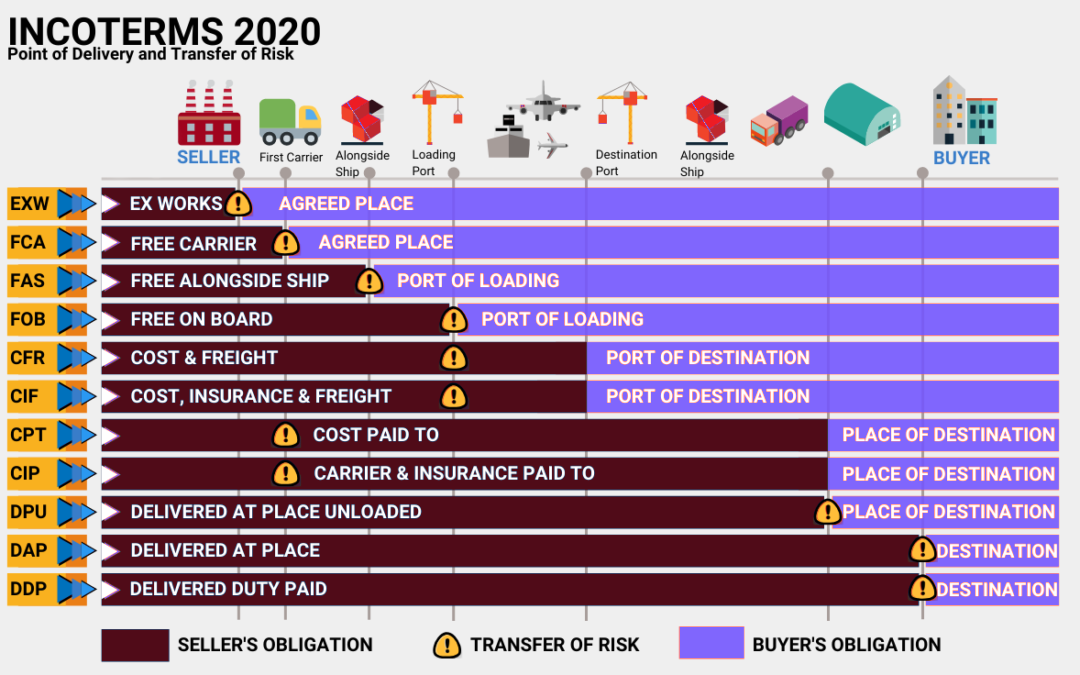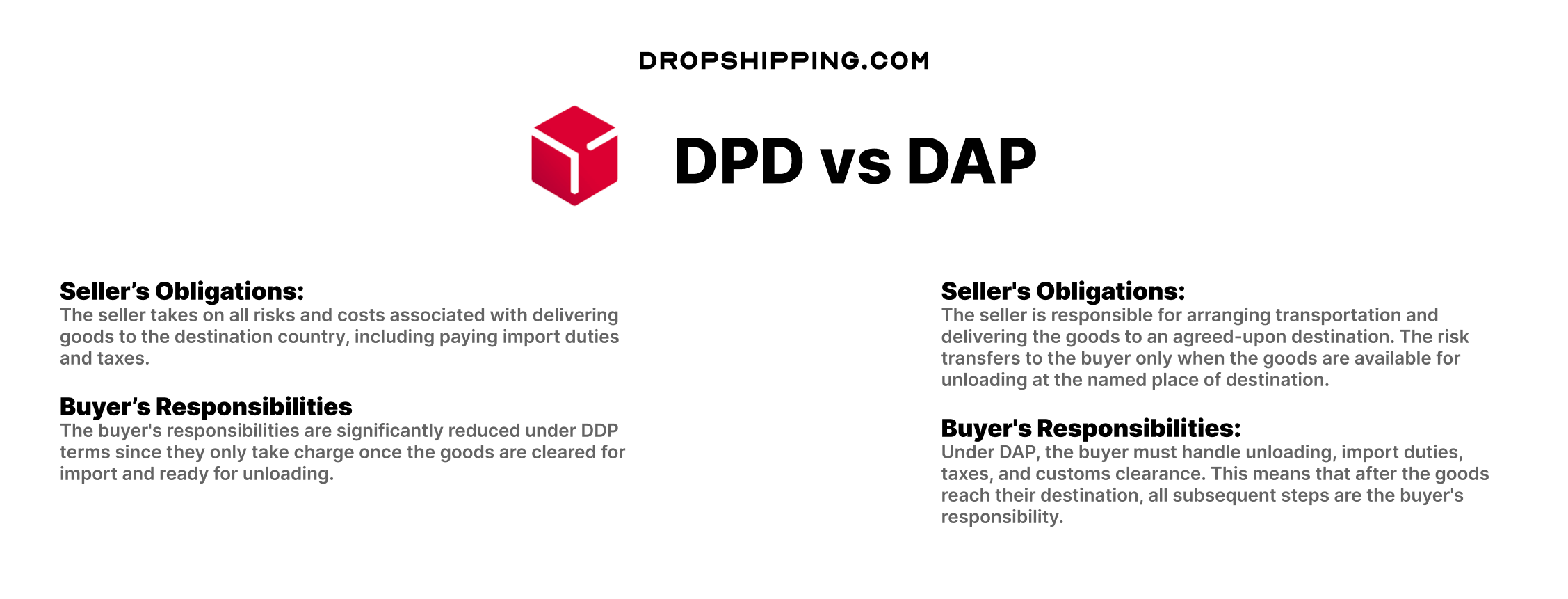What DAP Means? – Understand Delivery At Place In Shipping
Interested in international trade? Then get acquainted with DAP (Delivery At Place), a crucial term in the world of shipping. DAP, part of the Incoterms family, facilitates global trade communication.
Think of DAP as your GPS for shipping, guiding each step from packing at the seller’s site to unloading at the buyer’s location.
Credit goes to the International Chamber of Commerce (ICC) for defining these trade responsibilities, and ensuring clarity in global trade.
Understanding DAP streamlines business operations, benefiting sellers and buyers alike. Mastering it saves time and headaches, making shipping smoother.
This article delves into DAP in international trade, offering insights and tips to navigate it effectively. Let’s dive in!


Table of Contents
- What Does DAP Mean?
- The Role of Incoterms 2020 in Facilitating Smooth International Transactions
- Understand the Key Elements of a DAP Agreement
- The No. 1 Tool for all dropshippers – now with AI
- Advantages and Disadvantages of Using DAP Terms in International Shipments
- Key Differences Between DAP and Other Incoterms like DDP
- Best Practices for Effectively Implementing DAP Shipping Terms
- Conclusion
What Does DAP Mean?

When it comes to international shipping, understanding Incoterms like Delivery At Place (DAP) is critical.
The DAP definition, as set out by the International Chamber of Commerce (ICC), outlines that the seller is accountable for delivering the goods to a chosen location, ready for unloading by the buyer.
Here’s what this means in practice:
🔸 Seller’s Responsibility
The seller assumes all risks and costs involved with transporting the goods to the named place of destination.
Thus, this covers everything from packing up the goods at their own premise, setting for transport, dealing with export procedures, right through to unloading the goods at the destination.
🔸 Buyer’s Role
Once the goods have been delivered at the agreed location and are ready for unloading, the buyer assumes responsibility. This includes bearing all risks of loss or damage to the goods from that point onwards.
In essence, DAP ensures a shared and clear-cut division of responsibilities between sellers and buyers.
It fosters transparency in transactions by setting out who handles what during each phase of delivery.
By doing so, businesses can navigate shipments more effectively, thereby reducing any unexpected hiccups and enabling successful international trade operations.
The Role of Incoterms 2020 in Facilitating Smooth International Transactions
When you’re dealing with international shipping, Incoterms 2020 is like the navigational stars for sailors of old – guiding businesses through the complexities of global trade operations.
These terms act as a universal language, ensuring that buyers and sellers across different countries have a clear understanding of their respective responsibilities in transactions.
👉 Learn How To Determine Shipping Costs When Selling Online.
What are Incoterms 2020?
Incoterms 2020, the latest iteration released by the International Chamber of Commerce (ICC), serves as an indispensable set of rules. Here’s what these rules achieve:
- Clarity and Uniformity: They clarify the tasks, costs, and risks associated with the transportation and delivery of goods.
- Legal Framework: Although not laws themselves, they are recognized globally and often incorporated into contracts for the sale of goods worldwide.
- Adaptability: Responsive to changing practices in trade, Incoterms 2020 includes provisions for various modes of transport.
The Role of the ICC

The ICC’s role is pivotal. As stewards of these terms, the ICC ensures that they remain current and relevant. They listen to international business voices and calibrate Incoterms to reflect modern trade realities.
So, consider them as the architects building bridges over potential misunderstandings in international deals.
By equipping yourself with knowledge about Incoterms, you’re setting up your business for smoother transactions.
Hence, think of it as having a master key; one that unlocks clearer trade agreements, better relationships with partners, and ultimately more successful deals.
So let’s dive into understanding these terms further – starting with DAP – and unlock some good stuff for your shipping strategies.
💡 Tip: Learn What Does Shipped Mean In Dropshipping?
Understand the Key Elements of a DAP Agreement
Diving into the nuts and bolts of Delivery At Place (DAP) agreements reveals two critical components:

1. Allocation of shipping costs and risk transfer
The allocation of shipping costs and risk transfer are two sides of the same coin in a DAP agreement. In this type of agreement, the seller is responsible for arranging transportation and bearing all costs until the goods reach their destination.
Simultaneously, risk transfers from seller to buyer once the goods are made available for unloading at the named place.
2. Handling import duties and taxes
Import duties, taxes, and customs clearance responsibilities become relevant in DAP terms. Here’s an interesting twist – even though the seller delivers the goods right up to a designated place in the buyer’s country, it is usually not responsible for clearing them through customs. This task falls squarely on the buyer’s shoulders under DAP terms.
An understanding of these key aspects can assist businesses in skillfully navigating their way through international trade waters.
💡 Tip: Learn about Dropshipping Taxes and Payments – Guide For Beginners.
Advantages and Disadvantages of Using DAP Terms in International Shipments
When considering the pros and cons DAP shipping has to offer, it’s crucial to assess how these terms can impact your business operations. Let’s dive into the benefits first.
Advantages of Using DAP Terms:
✅ Seamless Door-to-Door Deliveries
For buyers, especially those new to the game of international logistics, DAP can be a game-changer.
It simplifies the complex shipping journey by ensuring goods are delivered right to their doorstep without them needing to navigate the intricate web of transportation logistics.
👉 Check out the 24 Best Dropshipping Suppliers In The USA [General + Niche].
✅ Control over the Shipping Process for Sellers
Sellers often appreciate the degree of control DAP terms provide.
By being responsible for arranging transport up to the final destination, sellers can select carriers they trust and that align with their shipping standards and timelines.
However, alongside these benefits come several challenges that need close attention.
Inherent Challenges with DAP:
❌ Risk Transfer Point
While sellers have control over the shipping process, they also bear all risks until delivery at the agreed location. Any mishaps during transit fall on their shoulders, which can be a significant liability.
❌ Customs and Import Duties Complexity
Buyers must handle import duties and customs clearance under DAP terms. This could be a steep learning curve and a potential hurdle for those unfamiliar with the customs processes in different countries.
These factors play a pivotal role in deciding whether DAP is suitable for your trade agreements. The key lies in weighing these aspects against your business needs and capabilities before committing to using DAP in international shipments.
👉 Check out Dropshipping vs. Retail Arbitrage: Pros, Cons, and Where To Start.
Key Differences Between DAP and Other Incoterms like DDP

When it comes to international shipping terms, it’s important to understand how different Incoterms compare to each other. Let’s take a closer look at the differences between DAP and DDP:
DAP (Delivery At Place) Highlights:
- Seller’s Obligations: The seller is responsible for arranging transportation and delivering the goods to an agreed-upon destination. The risk transfers to the buyer only when the goods are available for unloading at the named place of destination.
- Buyer’s Responsibilities: Under DAP, the buyer must handle unloading, import duties, taxes, and customs clearance. This means that after the goods reach their destination, all subsequent steps are the buyer’s responsibility.
DDP (Delivered Duty Paid) Contrasts:
- Seller’s Extended Obligations: Unlike DAP, with DDP, the seller takes on all risks and costs associated with delivering goods to the destination country, including paying import duties and taxes.
- Buyer’s Minimal Responsibilities: The buyer’s responsibilities are significantly reduced under DDP terms since they only take charge once the goods are cleared for import and ready for unloading.
The choice between DAP and DDP can have a big impact on various aspects of a transaction – from how costs are divided to who manages risks.
So, it’s crucial for both parties to carefully consider their capabilities and requirements before agreeing on an Incoterm.
Best Practices for Effectively Implementing DAP Shipping Terms
Navigating through the world of international shipping requires a keen understanding of the best practices, especially when dealing with DAP shipping terms.
A well-executed DAP transaction can save you from unnecessary headaches and unexpected costs.
Therefore, here are some steps to consider:
🔸 Negotiating Clear and Detailed DAP Agreements
Achieving successful transactions under DAP terms starts with a comprehensive, well-drafted agreement between all parties involved.
In fact, it’s crucial that sellers and buyers have a mutual understanding of their rights and obligations throughout the supply chain.
- Make sure to specify the named place of delivery accurately to avoid misunderstandings.
- Explicitly state who is responsible for handling customs duties and taxes.
- Define clearly when the risk transfers from the seller to the buyer.
These details in your DAP agreement provide clarity, setting expectations right from the start.
🔸 Proper Packaging and Labeling for Secure DAP Shipments
The physical preparation of goods often gets overlooked, but it’s an integral aspect of a successful DAP shipment. Proper packaging and labeling play a vital role in minimizing the risk of damage or loss during transit.
- Use high-quality, durable packaging materials that can withstand long journeys.
- Products should be securely packed to prevent movement within the box during transit.
- Each package should carry clear, legible labels with essential information such as destination address, contact details, and any specific handling instructions.
Remember, your goods’ journey doesn’t end at the port—it continues until they reach the buyer’s designated place. Ensuring they arrive safely adds credibility to your business reputation while fostering trust with your customers.
Master these best practices and you’re well on your way to effectively implementing DAP shipping terms in your international transactions.


Conclusion
Grasping the DAP meaning is a game-changer in international trade. It empowers you to navigate shipping terms with confidence and optimize your strategies.
The benefits of understanding DAP are immense – it aids in risk mitigation and promotes efficiency in global transactions.
Thus, clear communication and collaboration form the backbone of successful DAP operations.
Also, it’s essential for sellers, buyers, and logistics partners to work together, ensuring a smooth flow from the warehouse to the buyer’s doorstep.
So, remember: knowledge is power! Use what you’ve learned about DAP to enhance your shipping processes and business outcomes. Happy trading!













![The Top 21 3PL Companies Compared [2024 List & Guide]](https://images.weserv.nl/?url=https://prod-dropshipping-s3.s3.fr-par.scw.cloud/2024/03/Frame-3922469.jpg&w=420&q=90&output=webp)